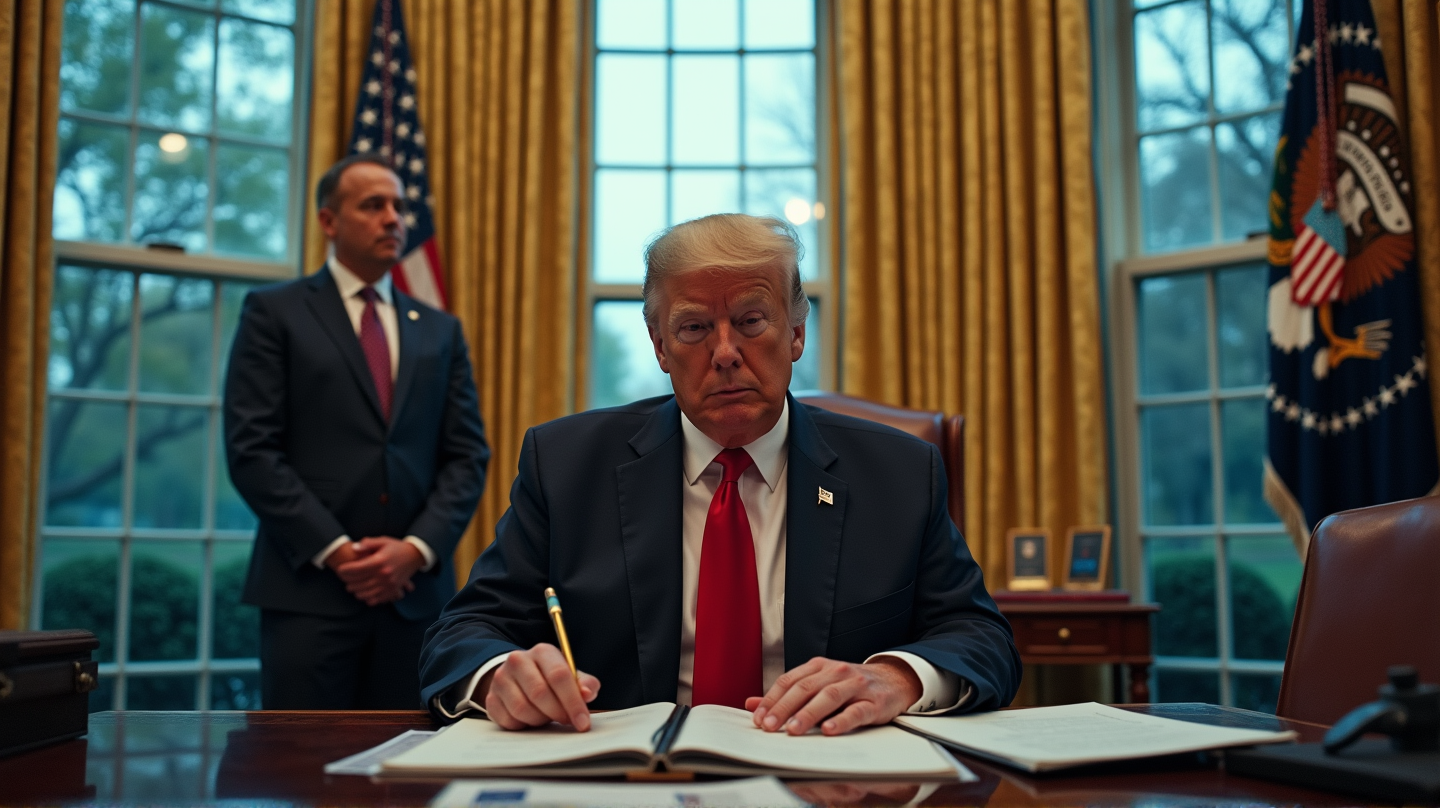Trump's Bold Defense of the Economy: Bold Charts vs Grim Job Data
In a bid to reshape economic perceptions, Trump unveils charts boasting a solid U.S. economy, countering recent alarming job reports.

In the heart of Washington, the Oval Office became a battleground for economic narratives last Thursday. President Donald Trump, in a surprising move, seized the moment to challenge recent alarming job reports with his own narrative, supported by a series of vivid charts. According to Lock Haven Express, this was not just a display of statistics; it was a calculated effort to defend his economic track record as the nation’s leader.
A Performance Worth the Charts
Trump’s ally in this ambitious endeavor, Stephen Moore of the Heritage Foundation, flipped through an array of charts set on an easel. The aim? To paint a picture of robustness in the U.S. economy, elevating Trump’s economic performance while critiquing the legacy of his predecessor, Joe Biden. Moore, a noted co-author of “Trumponomics,” emphasized alleged discrepancies in reported job growth during Biden’s years.
Challenging Economic Perceptions
The charts unveiled, aimed at resetting economic perceptions, were as much about storytelling as they were about data. Trump hinted at a conspiracy within the Bureau of Labor Statistics, suggesting inflated job numbers under Biden—a claim lacking statistical evidence. Nonetheless, the president’s narrative was clear: he intended to reshape the economic discourse with bold claims of progress and improvement.
The Sluggish Job Growth Reality
Despite the compelling visual arguments, the facts told of a slowing pace. Job growth had indeed become sluggish, with only 73,000 jobs added in July and a worrying downward revision of previous months’ figures by over a quarter million. This has been juxtaposed against inflation worries rooted in Trump’s tariff policies—a reality that challenges his narrative of imminent economic prosperity.
Inflation and Reality Check
Trump’s term has not been without its economic strains. Inflation jitters have been rekindled, reminiscent of the days when high consumer prices haunted households during Biden’s presidency. Recent analyst reports, like one from Goldman Sachs, predict an upcoming inflation spike—casting a shadow over Trump’s economic optimism.
The Data Dilemma
Moore, weaving through economic data, claimed a rise in median household income, adjusted for inflation, as proof of Trump’s successful economic policies. Yet, his reliance on unpublished Census Bureau data left room for doubt and verification challenges. The numbers he presented were enticing, yet their origins elusive.
Through this dramatic Oval Office presentation, Trump aimed to anchor his presidency in a narrative of economic revival. The charts were his arsenal, the media his audience, and the economy a complex story of successes, challenges, and political maneuvering.





